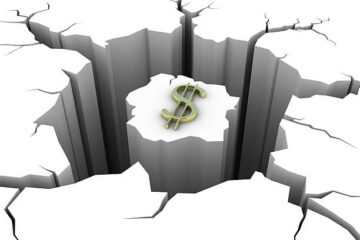One of the biggest downfalls that keeps many curious car buyers from experiencing the electric vehicle ownership experience is charging.
Though EV range has improved to the point where plenty of models offer more than 300 miles on a charge, the lack of charging infrastructure and the time it takes to recharge are the biggest caveats for buyers besides the higher prices of EVs compared to gas cars.
The lack of EV chargers and general car owners’ old habits have spawned a new phenomenon known colloquially as “charger hogs” or “plug hogs.” This term refers to ill-mannered EV owners who leave their EVs plugged in at charging stations to exploit the last bit of juice in their batteries.
However, Electrify America, an EV charging company that claims to offer the largest amount of open hyper-fast charging stations, is taking action against these ill-mannered owners in a way that can hurt their wallets.
Tesla Supercharger next to an Electrify America Level 3 charger at the parking garage of The Shops at Riverside in Hackensack, N.J.
James Ochoa
Being ‘that guy’ will cost you.
In an effort to reduce charging congestion, Electrify America is testing a pilot program that would enact a strict charging limit at 10 of its busiest EV fast-charging stations in California.
The idea is that once the charger detects that an EV’s batteries are already charged to 85%, no more electricity will be dispensed. Drivers will be kindly asked to unplug and leave for the next person or face an “idle fee” of 40 cents per minute every minute their car stays plugged in.
In an interview with CNN, Electrify America President Robert Barrosa said that many new EV owners are still getting to grips with how EVs “fill up” compared to traditional gasoline cars.
Essentially, automakers like Tesla, Hyundai, and Lucid recommend that owners fill up to 80% or 85% of the battery’s capacity for peak battery performance and longevity; filling to maximum capacity is recommended when absolutely needed.
However, with most EV owners used to “topping off” a gas tank, and with fast-chargers located far from each other, most will do the same with an EV without realizing that charging up to 100% will take significantly longer.
“Once you’re at a charger, it’s like ‘Oh, yeah. I’m filling all the way,’” said Barrosa.
More Business of EVs:
Porsche and Mercedes diverge at EV crossroadsA Fisker-type problem is affecting an automaker known for qualityPolice officer pulls over Waymo robotaxi, is greeted by no driver or passengers
Not a problem with Tesla
The concept of idle fees is nothing new to Tesla (TSLA) owners. On its website, the automaker says that the supercharging network was designed to “enable a seamless, enjoyable road trip experience,” and that they “understand that it can be frustrating to arrive at a station only to discover fully charged vehicles occupying spaces.”
“A customer would never leave a vehicle parked by the pump at a gas station and the same thinking applies with Superchargers.”
Tesla cars automatically limit charging to 80% “to reduce congestion” at busy stations; however, individual stations can implement either an “Idle fee” or a “Congestion fee.”
According to Tesla, idle fees kick in once a Tesla vehicle is not moved within five minutes at a Supercharging station that is 50% full. In the United States, Tesla drivers are charged 50 cents per minute, and the fees are doubled when stations are 100% full.
Congestion fees at some Supercharging stations replace idle fees and kick in five minutes after Tesla vehicles are left plugged in and charged up to 80%. Here, drivers are charged a dollar per minute when their vehicles are left plugged in; however, they are still allowed to charge up to 100%.
“This fee encourages drivers to charge only as much as is needed for their trip, rather than all the way to 100%,” Tesla says. “This increases the availability of Superchargers so that everyone has access when they need it.”
View the original article to see embedded media.
The (free) charging experience
The “charger hog” situation may be something that Electrify America’s own doings have brought up.
Electrify America has gained a reputation for not only having charging speeds as fast as Tesla’s superchargers but also for being the trusted charging provider with some of Tesla’s biggest rivals.
Currently, Electrify America has agreements with various automakers, including BMW, Volkswagen, Audi and Hyundai, offering two to three years of unlimited free charging from the date of sale.
If something is cheap or free, people will flock to it, and they will not care if others need it; it’s free.
Related: Elon Musk’s endorsement inspired Trump’s sudden flip-flop on EVs
In a post on the r/Polestar subreddit, Reddit user and Polestar 2 owner u/Amerrorist showed off a screenshot of the Polestar app showing over $2,600 in free fast-charges during the two years of free Electrify America charging. Another user and owner, u/tclnj, racked up $6,436.80, while another by the name of u/AlternativeTricky979 managed to score a whopping $8,883.60.
However, all this charging does come at the detriment of others. TikTok user @matt_t919 posted a video that showed multiple electric videos in a line at an Electrify America charger with an in-video caption that said, “I wouldn’t wish the Electrify America experience on my worst enemy.”
“Get an EV if you want to cosplay the 1973 oil crisis 🤗,” the user wrote in the description of the video.
Related: Veteran fund manager picks favorite stocks for 2024


